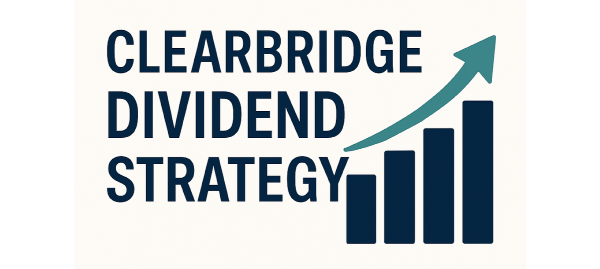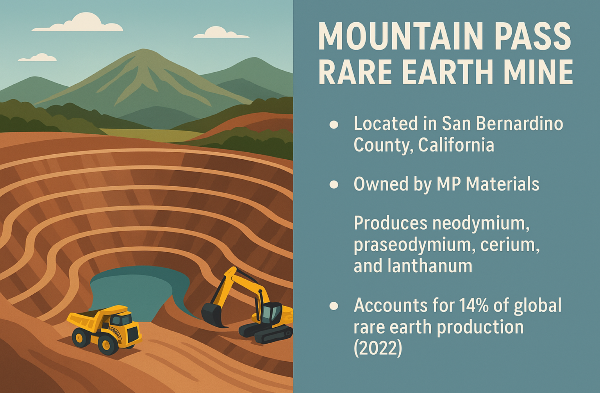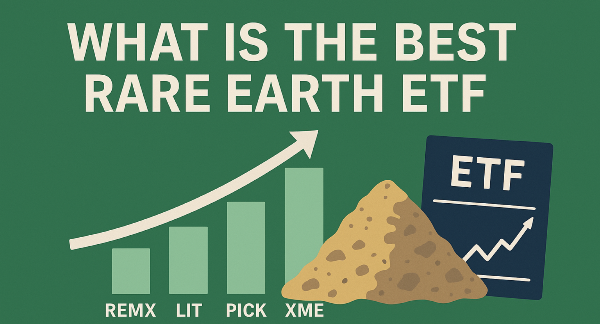Introduction
Dividend investing is a popular strategy for generating passive income while maintaining long-term growth potential. Investors seek reliable dividend-paying stocks to provide consistent returns, often reinvesting earnings to maximize wealth accumulation. ClearBridge Investments is a well-regarded asset management firm. The ClearBridge Dividend Strategy is designed to identify companies that help investors balance income generation with capital appreciation.
Understanding the ClearBridge Dividend Strategy
The ClearBridge Dividend Strategy focuses on generating consistent income while preserving capital through investments in high-quality, dividend-paying stocks. The strategy emphasizes companies with strong financial health, predictable revenue streams, and the ability to grow dividends over time. By prioritizing businesses with sustainable payout ratios and solid fundamentals, ClearBridge is preferred by investors. ClearBridge selects dividend-paying stocks through a rigorous evaluation process that includes fundamental analysis and industry research.
The investment team targets companies with strong balance sheets, competitive advantages, and a history of stable or growing dividends. Unlike strategies that chase high yields, ClearBridge focuses on businesses with sustainable dividend policies, ensuring that payouts remain consistent even during economic downturns. The portfolio typically consists of 40 to 60 holdings, diversified across various sectors to enhance stability and reduce risk exposure.
Historically, the ClearBridge Dividend Strategy has demonstrated resilience across market cycles, delivering competitive returns while maintaining a focus on income generation. Its long-term objective is to offer attractive risk-adjusted returns while ensuring income stability for investors.
Key Benefits of the ClearBridge Dividend Strategy
The ClearBridge Dividend Strategy is designed to provide investors with reliable income generation and financial stability. Companies selected for the portfolio typically have strong balance sheets and consistent cash flows, allowing them to sustain and grow dividends over time. This approach helps investors achieve financial security. Beyond income generation, the strategy also offers capital appreciation potential. This balance between income and growth makes it a compelling choice for investors seeking both stability and portfolio expansion.
Risk management is a core component of the ClearBridge Dividend Strategy. By avoiding companies with excessive payout ratios or financial instability, the strategy reduces exposure to dividend cuts and market volatility. Additionally, diversification across industries helps protect against sector-specific downturns, ensuring a more stable investment experience.
Investment Philosophy and Stock Selection
The ClearBridge Dividend Strategy follows a disciplined investment philosophy centered on selecting high-quality dividend-paying stocks. By focusing on businesses with durable competitive advantages, ClearBridge aims to provide investors with reliable dividend payouts while minimizing exposure to market volatility. A key aspect of the strategy is its emphasis on sustainable and growing dividends, rather than chasing high-yield stocks with uncertain financial stability.
By selecting stocks with sustainable dividend policies, the strategy ensures that investors receive steady income while benefiting from potential capital appreciation. Fundamental analysis plays a crucial role in the stock selection process. ClearBridge employs a rigorous evaluation framework that includes assessing financial statements, industry trends, and management quality.
Portfolio Composition and Sector Allocation
The ClearBridge Dividend Strategy maintains a diversified portfolio with sector allocations designed to balance yield and growth. The strategy focuses on high-quality dividend-paying stocks across various industries, ensuring stability and income generation. While the portfolio includes traditional dividend sectors such as consumer staples, utilities, and healthcare, it also incorporates technology and financial stocks to capture growth opportunities.
This sector diversification helps mitigate risks. Examples of companies included in the portfolio are Johnson & Johnson, Procter & Gamble, and Microsoft are commonly featured due to their ability to generate stable cash flows and maintain dividend growth. Additionally, energy and industrial stocks are selectively included to provide exposure to cyclical sectors while ensuring long-term income stability. Balancing yield and growth across industries is a key component of the ClearBridge Dividend Strategy.
The investment team carefully evaluates each sector’s contribution to overall portfolio performance, ensuring that high-yield stocks do not compromise financial stability. By integrating growth-oriented companies alongside traditional dividend payers, the strategy aims to deliver attractive risk-adjusted returns.
Comparison to Other Dividend Strategies
The ClearBridge Dividend Strategy differentiates itself from other dividend-focused funds by emphasizing sustainable dividend growth rather than chasing high yields. While some funds prioritize stocks with the highest dividend payouts, ClearBridge focuses on companies with strong financial health and consistent dividend increases. This approach helps mitigate risks associated with dividend cuts and ensures long-term income stability.
Additionally, ClearBridge employs fundamental analysis to select stocks, whereas some high-yield funds rely on quantitative screening methods that may overlook financial sustainability. ClearBridge, actively evaluates each stock’s fundamentals, ensuring that dividend payments are backed by strong cash flows and earnings growth. The ClearBridge Dividend Strategy has distinct advantages and drawbacks compared to its competitors.
It disadvantages are that it avoids excessively high-yield stocks, its dividend payouts may be lower than those of funds that prioritize yield over sustainability. Additionally, active management typically comes with higher fees.
Tax Considerations for Dividend Investors
Tax efficiency plays a crucial role in dividend investing, as different types of dividends are taxed at varying rates. Investors can benefit from holding dividend-paying stocks in tax-advantaged accounts, such as IRAs or 401(k)s, where earnings grow tax-deferred or tax-free. In taxable accounts, dividends are subject to federal and state taxes, making it essential to consider tax-efficient strategies when constructing a portfolio.
Qualified dividends are taxed at long-term capital gains rates, which range from 0% to 20%, depending on the investor’s income bracket. Ordinary dividends are taxed at standard income tax rates, which can be significantly higher. Optimizing dividend taxation involves strategic asset placement and tax-efficient investing techniques. Holding high-dividend stocks in tax-advantaged accounts and tax-loss harvesting are another option. Diversifying between qualified and ordinary dividends can also improve tax efficiency.
Risks and Challenges
Dividend investing offers a reliable income stream, but it comes with certain risks and challenges. One potential drawback is the reliance on companies to maintain dividend payouts, which can be affected by financial instability or changing business conditions. Dividend-focused portfolios may lack exposure to high-growth sectors, limiting overall capital appreciation.
Market conditions play a significant role in dividend yields, as economic cycles influence corporate earnings and financial stability. To mitigate risks while maintaining strong income streams, investors should adopt a diversified approach. Holding a mix of dividend-paying stocks across different sectors reduces exposure to industry-specific downturns. Selecting companies with a history of stable or growing dividends, such as dividend aristocrats, enhances portfolio resilience. Additionally, reinvesting dividends through dividend reinvestment plans (DRIPs) allows for compounding returns.
How to Invest in the ClearBridge Dividend Strategy
Investors can access the ClearBridge Dividend Strategy through various investment vehicles, including separately managed accounts and mutual funds. The strategy is available to institutional and individual investors seeking dividend-focused portfolios with long-term growth potential. ClearBridge offers diversified holdings across high-quality dividend-paying stocks, ensuring stability and income generation. Investors can explore options through financial advisors or directly via investment platforms that provide access to ClearBridge-managed funds.
Diversification across sectors and industries within the strategy helps mitigate risks while maintaining steady returns. Additionally, reinvesting dividends through dividend reinvestment plans (DRIPs) can enhance compounding returns. The ClearBridge Dividend Strategy is well-suited for investors seeking reliable income and capital appreciation. Additionally, those interested in balancing yield with growth potential can leverage ClearBridge’s disciplined approach to dividend investing for consistent returns.
Conclusion
The ClearBridge Dividend Strategy provides a balanced approach to dividend investing by prioritizing financial stability, sustainable payouts, and long-term growth. By focusing on high-quality companies with strong fundamentals, the strategy helps investors generate reliable income while mitigating risks associated with economic fluctuations.
Its diversified sector allocation and disciplined stock selection ensure steady returns, making it an attractive choice for income-focused investors. Whether seeking portfolio stability or reinvesting dividends for compounding growth, ClearBridge's approach offers a strategic framework for building wealth through dividend investing.




























Introduction
Dividend investing is a popular strategy for generating passive income while maintaining long-term growth potential. Investors seek reliable dividend-paying stocks to provide consistent returns, often reinvesting earnings to maximize wealth accumulation. ClearBridge Investments is a well-regarded asset management firm. The ClearBridge Dividend Strategy is designed to identify companies that help investors balance income generation with capital appreciation.
Understanding the ClearBridge Dividend Strategy
The ClearBridge Dividend Strategy focuses on generating consistent income while preserving capital through investments in high-quality, dividend-paying stocks. The strategy emphasizes companies with strong financial health, predictable revenue streams, and the ability to grow dividends over time. By prioritizing businesses with sustainable payout ratios and solid fundamentals, ClearBridge is preferred by investors. ClearBridge selects dividend-paying stocks through a rigorous evaluation process that includes fundamental analysis and industry research.
The investment team targets companies with strong balance sheets, competitive advantages, and a history of stable or growing dividends. Unlike strategies that chase high yields, ClearBridge focuses on businesses with sustainable dividend policies, ensuring that payouts remain consistent even during economic downturns. The portfolio typically consists of 40 to 60 holdings, diversified across various sectors to enhance stability and reduce risk exposure.
Historically, the ClearBridge Dividend Strategy has demonstrated resilience across market cycles, delivering competitive returns while maintaining a focus on income generation. Its long-term objective is to offer attractive risk-adjusted returns while ensuring income stability for investors.
Key Benefits of the ClearBridge Dividend Strategy
The ClearBridge Dividend Strategy is designed to provide investors with reliable income generation and financial stability. Companies selected for the portfolio typically have strong balance sheets and consistent cash flows, allowing them to sustain and grow dividends over time. This approach helps investors achieve financial security. Beyond income generation, the strategy also offers capital appreciation potential. This balance between income and growth makes it a compelling choice for investors seeking both stability and portfolio expansion.
Risk management is a core component of the ClearBridge Dividend Strategy. By avoiding companies with excessive payout ratios or financial instability, the strategy reduces exposure to dividend cuts and market volatility. Additionally, diversification across industries helps protect against sector-specific downturns, ensuring a more stable investment experience.
Investment Philosophy and Stock Selection
The ClearBridge Dividend Strategy follows a disciplined investment philosophy centered on selecting high-quality dividend-paying stocks. By focusing on businesses with durable competitive advantages, ClearBridge aims to provide investors with reliable dividend payouts while minimizing exposure to market volatility. A key aspect of the strategy is its emphasis on sustainable and growing dividends, rather than chasing high-yield stocks with uncertain financial stability.
By selecting stocks with sustainable dividend policies, the strategy ensures that investors receive steady income while benefiting from potential capital appreciation. Fundamental analysis plays a crucial role in the stock selection process. ClearBridge employs a rigorous evaluation framework that includes assessing financial statements, industry trends, and management quality.
Portfolio Composition and Sector Allocation
The ClearBridge Dividend Strategy maintains a diversified portfolio with sector allocations designed to balance yield and growth. The strategy focuses on high-quality dividend-paying stocks across various industries, ensuring stability and income generation. While the portfolio includes traditional dividend sectors such as consumer staples, utilities, and healthcare, it also incorporates technology and financial stocks to capture growth opportunities.
This sector diversification helps mitigate risks. Examples of companies included in the portfolio are Johnson & Johnson, Procter & Gamble, and Microsoft are commonly featured due to their ability to generate stable cash flows and maintain dividend growth. Additionally, energy and industrial stocks are selectively included to provide exposure to cyclical sectors while ensuring long-term income stability. Balancing yield and growth across industries is a key component of the ClearBridge Dividend Strategy.
The investment team carefully evaluates each sector’s contribution to overall portfolio performance, ensuring that high-yield stocks do not compromise financial stability. By integrating growth-oriented companies alongside traditional dividend payers, the strategy aims to deliver attractive risk-adjusted returns.
Comparison to Other Dividend Strategies
The ClearBridge Dividend Strategy differentiates itself from other dividend-focused funds by emphasizing sustainable dividend growth rather than chasing high yields. While some funds prioritize stocks with the highest dividend payouts, ClearBridge focuses on companies with strong financial health and consistent dividend increases. This approach helps mitigate risks associated with dividend cuts and ensures long-term income stability.
Additionally, ClearBridge employs fundamental analysis to select stocks, whereas some high-yield funds rely on quantitative screening methods that may overlook financial sustainability. ClearBridge, actively evaluates each stock’s fundamentals, ensuring that dividend payments are backed by strong cash flows and earnings growth. The ClearBridge Dividend Strategy has distinct advantages and drawbacks compared to its competitors.
It disadvantages are that it avoids excessively high-yield stocks, its dividend payouts may be lower than those of funds that prioritize yield over sustainability. Additionally, active management typically comes with higher fees.
Tax Considerations for Dividend Investors
Tax efficiency plays a crucial role in dividend investing, as different types of dividends are taxed at varying rates. Investors can benefit from holding dividend-paying stocks in tax-advantaged accounts, such as IRAs or 401(k)s, where earnings grow tax-deferred or tax-free. In taxable accounts, dividends are subject to federal and state taxes, making it essential to consider tax-efficient strategies when constructing a portfolio.
Qualified dividends are taxed at long-term capital gains rates, which range from 0% to 20%, depending on the investor’s income bracket. Ordinary dividends are taxed at standard income tax rates, which can be significantly higher. Optimizing dividend taxation involves strategic asset placement and tax-efficient investing techniques. Holding high-dividend stocks in tax-advantaged accounts and tax-loss harvesting are another option. Diversifying between qualified and ordinary dividends can also improve tax efficiency.
Risks and Challenges
Dividend investing offers a reliable income stream, but it comes with certain risks and challenges. One potential drawback is the reliance on companies to maintain dividend payouts, which can be affected by financial instability or changing business conditions. Dividend-focused portfolios may lack exposure to high-growth sectors, limiting overall capital appreciation.
Market conditions play a significant role in dividend yields, as economic cycles influence corporate earnings and financial stability. To mitigate risks while maintaining strong income streams, investors should adopt a diversified approach. Holding a mix of dividend-paying stocks across different sectors reduces exposure to industry-specific downturns. Selecting companies with a history of stable or growing dividends, such as dividend aristocrats, enhances portfolio resilience. Additionally, reinvesting dividends through dividend reinvestment plans (DRIPs) allows for compounding returns.
How to Invest in the ClearBridge Dividend Strategy
Investors can access the ClearBridge Dividend Strategy through various investment vehicles, including separately managed accounts and mutual funds. The strategy is available to institutional and individual investors seeking dividend-focused portfolios with long-term growth potential. ClearBridge offers diversified holdings across high-quality dividend-paying stocks, ensuring stability and income generation. Investors can explore options through financial advisors or directly via investment platforms that provide access to ClearBridge-managed funds.
Diversification across sectors and industries within the strategy helps mitigate risks while maintaining steady returns. Additionally, reinvesting dividends through dividend reinvestment plans (DRIPs) can enhance compounding returns. The ClearBridge Dividend Strategy is well-suited for investors seeking reliable income and capital appreciation. Additionally, those interested in balancing yield with growth potential can leverage ClearBridge’s disciplined approach to dividend investing for consistent returns.
Conclusion
The ClearBridge Dividend Strategy provides a balanced approach to dividend investing by prioritizing financial stability, sustainable payouts, and long-term growth. By focusing on high-quality companies with strong fundamentals, the strategy helps investors generate reliable income while mitigating risks associated with economic fluctuations.
Its diversified sector allocation and disciplined stock selection ensure steady returns, making it an attractive choice for income-focused investors. Whether seeking portfolio stability or reinvesting dividends for compounding growth, ClearBridge's approach offers a strategic framework for building wealth through dividend investing.